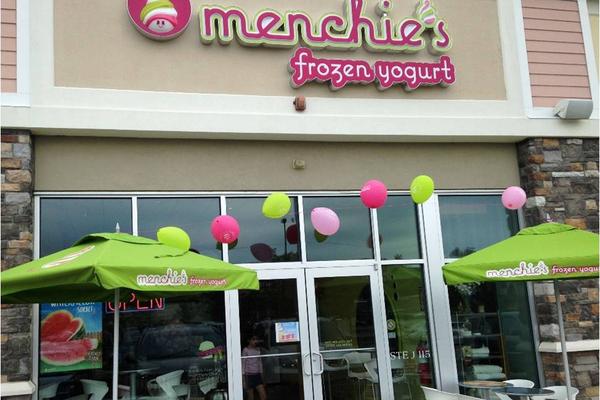There’s not yet a yogurt shop on every corner in Greater Boston. But it’s sure starting to seem like there is.
The fight over frozen desserts is heating up here as the country’s two biggest frozen yogurt chains — Menchie’s and Yogurtland — enter and expand in the market. The third and fourth biggest chains — Pinkberry and Orange Leaf — arrived here a few years ago amid major expansion pushes. Now, it’s their two bigger rivals’ turn.
Yogurtland first opened shops in the area last year, and now has three: two corporate locations in Brookline and Cambridge, and a franchisee-owned spot in Newton. Menchie’s, meanwhile, opened its first Massachusetts shop about a month ago, on School Street in Mansfield.
Rustum Boyce, the franchisee of that 1,450-square-foot Menchie’s shop in Mansfield, tells me he originally looked at opening in Vermont before settling on Massachusetts. He’s planning to add at least two more stores in the next year or two, presumably not too far from his first shop in Mansfield. Boyce says he wanted to get into the frozen yogurt biz, and he preferred the taste of Menchie’s yogurt to what was offered by its rivals. (The chain was named after the nickname, Menchie, that co-founder Adam Caldwell gave to his wife Danna, and is a variation of the Yiddish word “mensch.”)
Yogurtland, meanwhile, has been here for about a year and is looking to add seven to 10 franchised locations here within the next three years. The company is actively hunting for franchise partners right now to help them with that push. Larry Sidoti, Yogurtland’s vice president of development, says Yogurtland created the self-serve model that now dominates the retail yogurt business, back when the chain was launched in 2006. (Menchie’s opened a year later.) Sidoti tells me that his chain tries to differentiate itself by offering a slightly less expensive per-ounce price for yogurt when compared to its rivals (essentially shaving about 50 cents off the typical 8- or 9-ounce order). He tells me he’s not worried about the competition in Greater Boston, although he concedes that Pinkberry’s presence here could pose a challenge.
The bigger challenge, though, is helping prospective franchisees wind their way through the myriad regulatory hoops they face in the Boston area. Those bureaucratic hurdles are more difficult here, Sidoti says, than anywhere else in the country. “We’ve been through it a few times so we have a better understanding and we’re better prepared for it,” he says. “But it’s not an easy place to maneuver through if you haven’t done it before. It’s a great town once you’re there doing business, but to get to that point is not easy.”
These new chains share some key similarities: They’re both focused on self-service, they’re both based in California, and they both have their own proprietary flavors. (Many smaller yogurt retailers will buy from a private label manufacturer.)
But are they both too late to the party?
Mary Chapman, director of product innovation at restaurant consultancy Technomic, tells me that the yogurt business is definitely approaching a bubble of sorts in some areas, like Manhattan and southern California, where self-serve shops are already starting to close. The biggest chains have more flexibility and marketing clout, she says, and can withstand a few units that take longer to get established. However, Chapman concedes that it’s starting to get hard to tell all the different yogurt shops apart.
The four top chains are roughly around the same size. Menchie’s was the No. 1 yogurt chain based on revenue last year, according to Technomic research. Chapman says Menchie’s generated $140 million in store revenue last year, and had 279 outlets at the end of the year. Yogurtland, meanwhile, was No. 2, with $132 million in store sales and 245 locations. Pinkberry was a close No. 3, with $130 million and 157 stores. (Chapman says Pinkberry’s prices tend to be a little bit higher than the others, and thus have a higher per-store sales average.) And Orange Leaf ended 2013 with 300 stores, and about $114 million in store sales.
The yogurt boom started to materialize around the country five years ago, and now there are definitely places that are saturated. “You can see if a neighborhood or a suburb suddenly has five frozen yogurt places to choose from, (that) they can’t all sustain themselves all the time,” Chapman says. “It’s an inexpensive product, but you have to be in a great location. If there are too many of them, it becomes commoditized. It looks like an easy business, but I think it’s tougher than it looks.”
Jon ChestoManaging Editor,
Print-Boston Business Journal
Email | Twitter | Google+








Leave a Reply
You must be logged in to post a comment.